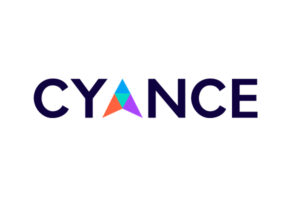Hi Jon, could tell us about you your journey in MarTech?
Absolutely! I’m the founder and Chief Product Officer at Cyance, a leading B2B Intent & ABM Platform for growth in European markets.
However, my journey in MarTech started over 25 years ago as a sales executive and then in leadership roles. In 2010, I founded a marketing agency that helped challenger brands rapidly gain market share. We soon realised the need for software that helps businesses to find their ideal customers (and their stage of the buying cycle) so that marketing and sales teams could be more relevant, precise, and efficient.
We created Cyance to do precisely that, using data from online behaviour to indicate buyer intent. Our strength lies in providing our customers with customised insights from a vast data pool in multiple languages. These insights help our customers to identify when company behaviour suggests an active and relevant buying journey.
This helps our customers to prioritise what companies they should focus on, when their behaviour suggests they could be in a relevant buying journey. This helps them to positively impact upon customer revenues in the most efficient way.
Today Cyance has blossomed into a SaaS platform used by global multinational companies as well as leading Account Based Marketing agencies.
What challenges has the Covid-19 pandemic Posed for intent marketing?
What luck, I have recorded a video on exactly this topic.
What sets Cyance apart from the competition?
Custom Intent Keywords: Cyance allows you to track companies that are researching relevant business challenges or goals, which are relevant to your products and services. This behaviour is linked to the content consumption taken from many tens of thousands of websites & publishers. Our support team will help you define the specific keywords and phrases contained within these websites that are deeply relevant to your business – unlike other platforms which insist you select fixed business topics from a generic list.
This is important because, with Cyance, you are only tracking account behaviour that is relevant to your specific products and services – rather than running the risk of picking up intent signals from noisy and generic predetermined topics.
Multilingual Intent: The only platform that can show you intent in European languages to get a fuller picture. Other intent data providers don’t track non-English content. Instead, they directly translate English-language sites, and in the process lose all the nuance of local language from intent signals. Take literal translations for example – in French, ‘cloud’ would be ‘nuage’. If you’re talking about cloud technology though, you would still use the word ‘cloud’.
Cyance is the only platform that supports customisation and intent discovery in multiple languages including French, German, Spanish, Italian and Dutch, with additional languages planned – enabling you to accurately find and target European high-intent buyers.
Unbeatable Coverage: Cyance is the leading provider of intent data outside of the US. Our buyer intent signals include over 55,000 sources, with more than 30,000 from Europe. Per fiscal quarter, we track 24 billion B2B data events across Europe and APAC. But what do these numbers mean? Well, when benchmarked by marketing agencies, Cyance was found to track roughly 60% more data than our closest competitors in Europe.
Privacy Compliant & Future-proofed: Cyance is 100% GDPR compliant – we profile companies, not people and their personal data. We also recognise and champion the ongoing changes in privacy regulations and our platform is built with future proofed technology to keep pace with the changes in the market.
Accuracy of Intent Data: Our data science ensures you get an accurate picture of organisations with intent to purchase, even in the early stages of a committee based buying cycle – while filtering out false positives or those who are not serious about resolving their business problems with products and services like yours. Cyance detects what we call ‘bump’ and ‘crown’ research patterns (named due to what they look like on a graph tracking intent signals), which help identify prospects during the research phase of their buyer journey, providing a ‘golden window’ of opportunity to engage, show thought leadership, be helpful and effectively ‘lead the RFP’
FIT score: Unique to Cyance, the FIT score gives you the ability to quickly determine which accounts are a good fit for your business & in-market, based on a composite score that includes:
- Firmographic data – such as geographic area, number of employees, type of organisation, industry and most importantly, technologies deployed internally. If companies have technology installed that your product connects with, is dependent upon, or you have a sales battlecard against, then such insights can help you to segment & target them accordingly.
- Intent score – based on Cyance’s improved data science, using signals from buyer committee behaviour across thousands of online sources.
- Sales Triggers – such as previous engagement with a sales / marketing campaign.
Trending Topics: Cyance allows you to gain valuable insights into industry trends and prospect interests to meaningfully inform your content and business strategy.
You can uncover what your best-fit accounts are interested in, and how long they have been researching these topics, to gain a better understanding of their priorities and pain points – and what content will resonate with them best.
What direction do you envisage ABM taking, in the years to come?
- Cookies will be long gone before the official deprecation. Their role in ABM – for selection and targeting, will need to be rethought.
The deprecation of cookies may have been delayed, but they’re already on their way out: Firefox and Safari have already blocked tracking cookies by default, and Google itself has announced that it won’t roll out alternative user-level ad identifiers as a replacement for third-party cookies. Cookies are quickly becoming null and void long before we originally thought they would.
As such, B2B marketers will turn their backs on cookies over the coming months and will need to look towards martech and adtech to provide a longer-term solution that generates the same, if not better, insights into customers and prospects. One such solution is Unified IDs.
- Unified IDs will become more of a focus for B2B marketers and ABM
By building a unique ID for users that can be tracked across the entire digital ecosystem, without the need for additional syncing, Unified IDs present an opportunity for the marketing industry to thrive in a cookie-less world. Unified IDs represent a personal, static, exchangeable and interoperable identifier for each user, taking into account their multiple touchpoints.
Already we’re seeing innovative B2B marketers exploiting the numerous advantages that Unified IDs have over cookies. Firstly, they have a longer shelf life than cookies, making it much easier to build audiences, attribute behaviour trends and measure activation outcomes over time. Plus, Unified IDs work in an omnichannel manner and, by this definition, I expect to see an expansion of data sources that go beyond what we’re used to, such as the inclusion of more modern channels like SmartTVs and wearable technology. Finally, I predict that the increased use of Universal IDs will translate into much more reliable and accurate data for the marketer, providing a wider picture of intent.
- ABM will become industry standard
With 70% of marketers reporting that they now use an ABM system compared with just 15% from 2020, there’s already been a significant uptake of ABM. But I expect to see these figures increasing even more over the next 12 months and beyond.
More and more B2B marketers are recognising the benefits of a personalised and targeted approach in their campaigns. We now have the required technology and the accurate data – it’s only a matter of time until we reach 100% ABM within B2B.
ABM provides a much more personalised marketing approach, encourages both marketing and sales teams to align, and, as a result, shortens the sales cycle. ABM is so much more precise and measurable than traditional approaches, providing clearer ROI and more efficiency in marketing and sales teams.
ABM is also a more tempting solution for marketers as marketing expenditure, as a percentage of revenue, is at its lowest point in over a decade. Marketers are looking for solutions that do more with less. ABM does just that. Its efficient and targeted form of outreach results in less wastage than traditional mass advertising and less targeted digital strategies.
- B2B data will switch to a less is more approach
It has long been thought, from both a sales and marketing perspective, that the more data, the better. This has been particularly true during the pandemic. Many businesses have tried to compensate for in-person and telephone sales through digital content and channels, not truly appreciating the buying stage or digital journey of the modern B2B buyer. As a result, we’ve seen that buyers are feeling inundated with messaging that lacks context and relevance.
So, as B2B demand generation teams become cognisant of this, I expect to see a much-needed shift in attitudes in 2022 and beyond, with marketers looking to strip down their use of data to focus only on the most useful, relevant, and accurate insights. By cutting through the data noise which has become such a distraction over recent years, marketers can instead concentrate on getting a clear view of buyers’ intentions and their position in their buying journey. Nothing else really matters, and this is something greater numbers of B2B marketers will recognise over the next 12 months.
- Data integration will provide a clearer view of the customer
Finally, in line with a streamlined set of data points, I also expect marketers to look to remove data silos and integrate all of their insights into one unified platform. This will allow them to generate a much clearer and more accurate picture of their audiences.
In particular, I expect to see more integration between different data sources, such as first-party and third-party intent data. This in turn will be layered with wider insights such as firmographic and technographic data. In doing so, B2B marketers will begin to get a full view of the customer.
What 3 things that business owners can do to optimize their digital outreach?
- As sales and marketing professionals will have to continue to do more with less, we must also invest our precious few resources on best-fit accounts that are most likely to engage with our brand. Tech must enable us to select accounts for ABM or smart demand gen based on a composite of Firmographic criteria, Technology matches and Intent Data, as well as Engagement signals from your own ads, landing pages and other digital assets.You still need to proactively outreach to your addressable market, where you have establish an ideal customer profile match. That’s what marketing teams are expected to do right? But I’m a fan of prioritising the company showing the most level of relevant intent and engagement to create the demand, most likely to convert into sales revenues.
- Use accurate Intent Data to discover genuine early-stage buyers, while filtering out companies who aren’t serious about finding solutions to genuine problems. Identifying prospects during their early stage research phase of their buyer journey, provides a ‘golden window’ of opportunity to engage, show thought leadership, be helpful and effectively ‘lead or beat the RFP’ to use a slightly outdated phrase. However, this is easier said than done as many intent data providers cannot distinguish genuine committee-based buyer behaviour from false positives in early stages.
- With data privacy regulations coming into effect and browsers moving to block 3rd party cookies, marketers and the digital advertising industry must ensure they follow compliant and future-proof strategies (and technology partners) to build their audiences and conduct ABM. Use future proofed technology that replaces 3rd party cookies with technology like unified IDs, helps you to build 1st party audiences in compliance with privacy laws & helps grow audiences across the digital advertising ecosystem.
As a business leader, what are your thoughts on how ROMI and its use as a metric to define success?
Return on marketing investment (or ROMI) is a great metric to measure the effectiveness of a marketing campaign. However, these days one must not only focus on ROI but on capital-efficient growth – so another great lagging success metric, particularly for SaaS businesses, is CAC:LTV or Cost of Acquiring Customer to Lifetime Value of the customer. I’m a big fan of marketing and sales metrics being totally aligned to what matters most for every business – customer revenues!
However, we must approach the measurement of marketing campaigns with caution as things can be a little more nuanced than initially expected, bearing in mind almost all campaigns are multi-touch and omni-channel. Pardon the generalisation, but at least seven touchpoints with the brand are required before conversion so care must be taken to attribute success to the investment made in all channels involved, not just the original point of conversion.It’s probably easier and more manageable to start with building a demand gen strategy for a single channel, like LinkedIn, get it to work, which takes bit of time and then build from there. Don’t be too eager to expand to multiple channels too soon. At this point it’s all about proving increased engagement from your ICP accounts. Then focus on the contribution from marketing towards sales pipeline value and revenues. You should be tracking sourced and influenced by marketing opportunities as success measures at this stage.
Your top pick for a book on marketing that everyone should read?
Wow! There are so many! Instead of a book I would recommend people should follow Chris Walker, CEO of Refine Labs. He is prolific on LinkedIn and also hosts a podcast, State of Demand Gen. He nails it every time he posts his thoughts around b2b marketing & sales strategy.
Could you name one other marketer that you would like to see featured here?
Declan Mulkeen – CMO at StrategicABM. He’s a super smart CMO and works at an innovative b2b marketing agency in the UK. They are ahead of the game when it comes to all things ABM, Demand Gen and digital.
What are the key ingredients that make a successful marketer, in this day and age?
- An understanding of the importance of getting the timing, content and relevance of every marketing message right. Particularly today when we are constantly bombarded with irrelevant and ill-timed marketing messages. We now have the data and insights to do this at pace and with scale.
- An understanding that being helpful rather than being salesy over a sustained period in one’s messaging leads to real thought leadership and brand awareness and credibility – which is a marathon and not a sprint.
- Someone who is unafraid to do things differently to stand out. Never do things ‘just because they have always been done that way’.
- In B2B, you should be obsessed with positively impacting upon customer revenue strategies (acquisition, retention and expansion). Therefore every decision you make around strategy and tactics, should be driven by this obsession. Marketing needs to create demand and positively impact upon sales revenue growth. Establishing what works over time and then optimizing will pay off later on, and avoid too much short-term thinking.
Read More: How Rapid Digitization is Driving Innovation in Pharmaceutical Industry in 2022




